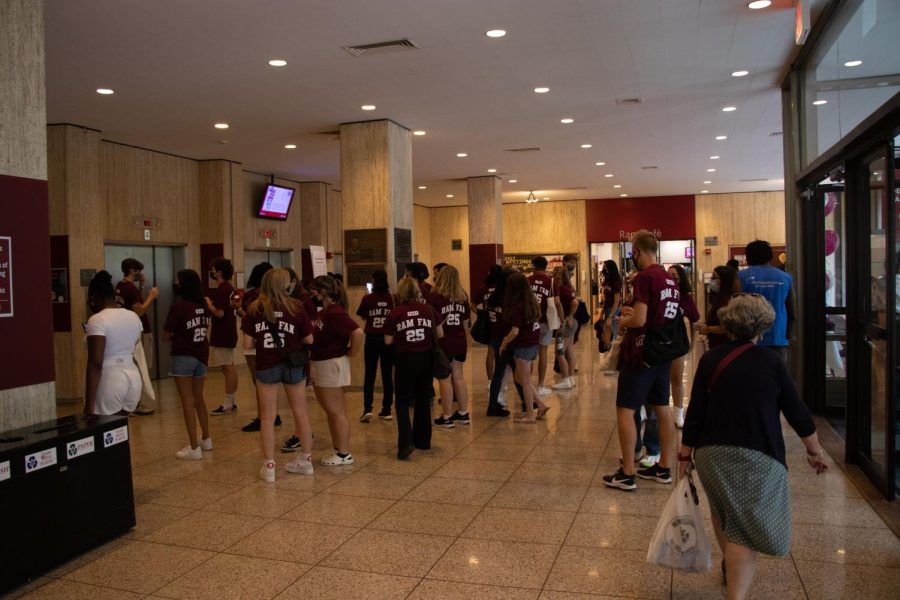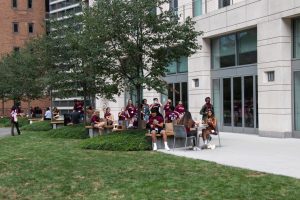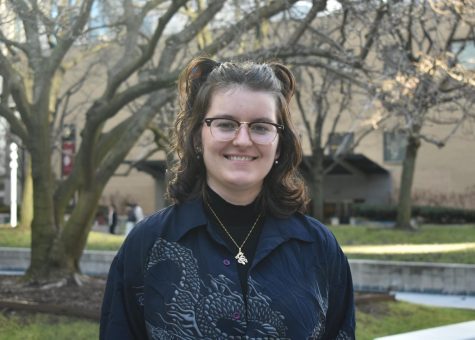Fordham’s First-Year Class Size Is Causing Problems
The large first-year class is setting a dangerous precedent for combatting overcrowding concerns
Fordham’s first-year class size is the largest yet, which can lead to problems of an overcrowded campus and a higher student-to-faculty ratio.
October 6, 2021
The Class of 2025 is the biggest first-year class Fordham Lincoln Center (FLC) has ever had — and it’s coming at a time when overcrowding is a dangerous problem.
Colleges usually admit more students than they expect to enroll, a decision based on enrollment predictions. Each year, Fordham typically admits around 20,000 students and just over 2,000 usually enroll. This year, the over-acceptance backfired as more students than expected enrolled.
Even if the Office of Undergraduate Admission corrects this over-acceptance for next year and goes back to the average amount of incoming students, problems will still persist. For reference, the average class size in previous years for FLC was between 600 and 700 students. This year, it was over 1,000.
Some problems, such as housing and classroom assignments, are already evident, but unless Fordham plans to expand its real estate, adding more residence halls and classrooms, more issues with spacing and academics will become apparent. Fordham needs to refrain from over-accepting students, especially when space is at a premium for social distancing measures.
The most noticeable problem is housing, as Fordham struggled to fit everyone in just two residence halls this year. Unlike previous years, when first-years only took up one to two floors in McMahon, this year’s class took up six, with a few more scattered on other floors. This occurred even with more upperclassmen moving off-campus to take advantage of lower rent prices across the city due to COVID-19.
While there have previously been issues fitting everyone on campus — for example, some McMahon suites had up to nine in them during previous years — it has never been quite this bad. Some first-year students only received their housing assignments the week leading up to move-in, making an already nerve-wracking transition even more difficult.
Even more important than a lack of space, more students mean there will be fewer professors per student.
Many people have probably noticed the construction going on in the tunnels, transforming the space for new classrooms. Some classes take place in Martino Hall, formerly only a Fordham office space, but even that can only do so much for the spacing issue.
Even more important than a lack of space, more students mean there will be fewer professors per student. In order to compensate, Fordham would either have to hire more professors or increase class sizes. FLC prides itself on its small class sizes and a low student-to-faculty ratio, but as confirmed by Dean of Fordham College at Lincoln Center Laura Auricchio, the school has already raised the class size limit for many classes by one student.
Additionally, many upper-level classes only have one or two sections per semester, making it difficult for students to register for the classes they need or want. While all students know the struggle of not being able to get their preferred schedule, they at least have the knowledge that the more they advance at Fordham, the easier it will be. Since registration is done based on the number of credits a student has, the further one advances, the fewer people there are who can register before them. This won’t hold as true for the current first-years or the classes after them, as there are a couple hundred more students to compete against.
While one class of this size is proving problematic, it is only temporary, as they will eventually graduate.
While some may think that these students can just take classes at Rose Hill’s much larger and more spacious campus, that is certainly not the answer. First of all, students chose to come to Lincoln Center for a reason; they should not be forced to take classes at Rose Hill if they do not want to. But, arguably more important, Rose Hill is having the same issue, since their first-year class is also the biggest the school has ever had. So while there may be one or two more sections of an upper-level class at Rose Hill, there is no guarantee that students from the Lincoln Center campus will be able to get a spot. Even if they can, that would only be a Band-Aid on the larger problem of accepting too many first-years.
The only way to truly fix the issues caused by this larger class is to ensure that it does not happen again. While one class of this size is proving problematic, it is only temporary, as they will eventually graduate. However, if Fordham is unable to return to the previous average class size next year, these issues will compound.
While we welcome the new first-years with (socially distanced) open arms, the number of admissions into Fordham last year represents unsustainable growth that we must curb before it is unmanageable. Like a Lowenstein elevator during rush hour, there is simply no space.















